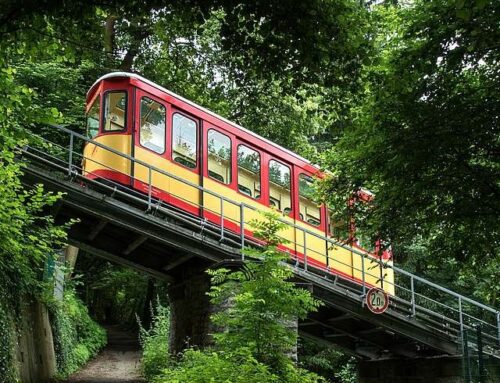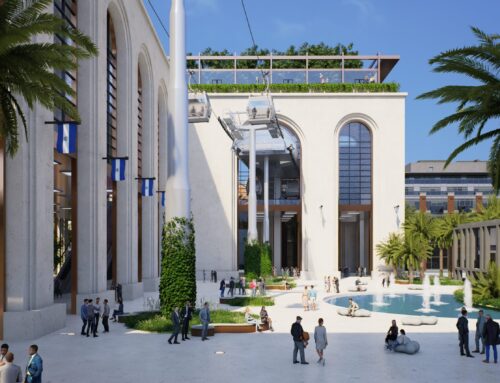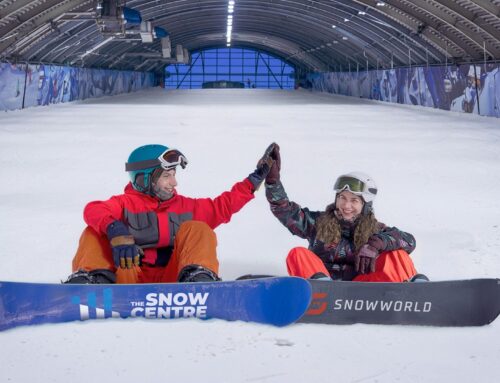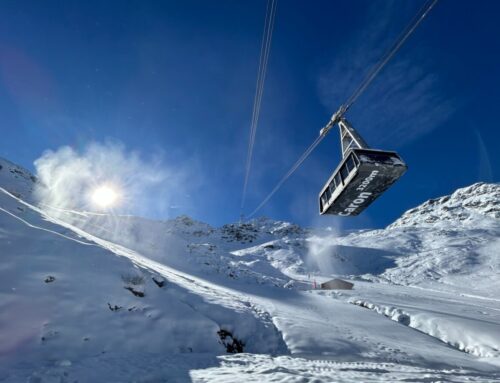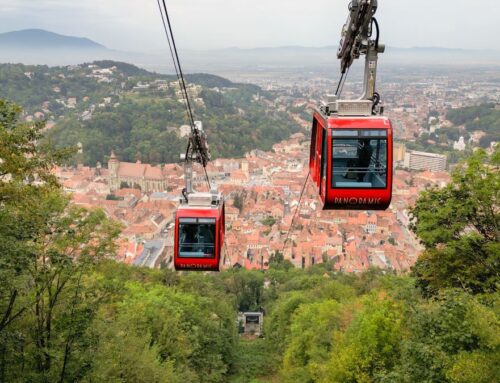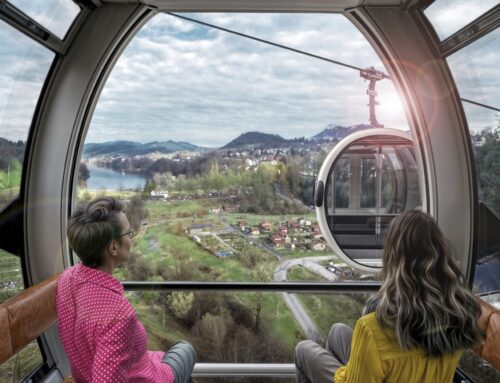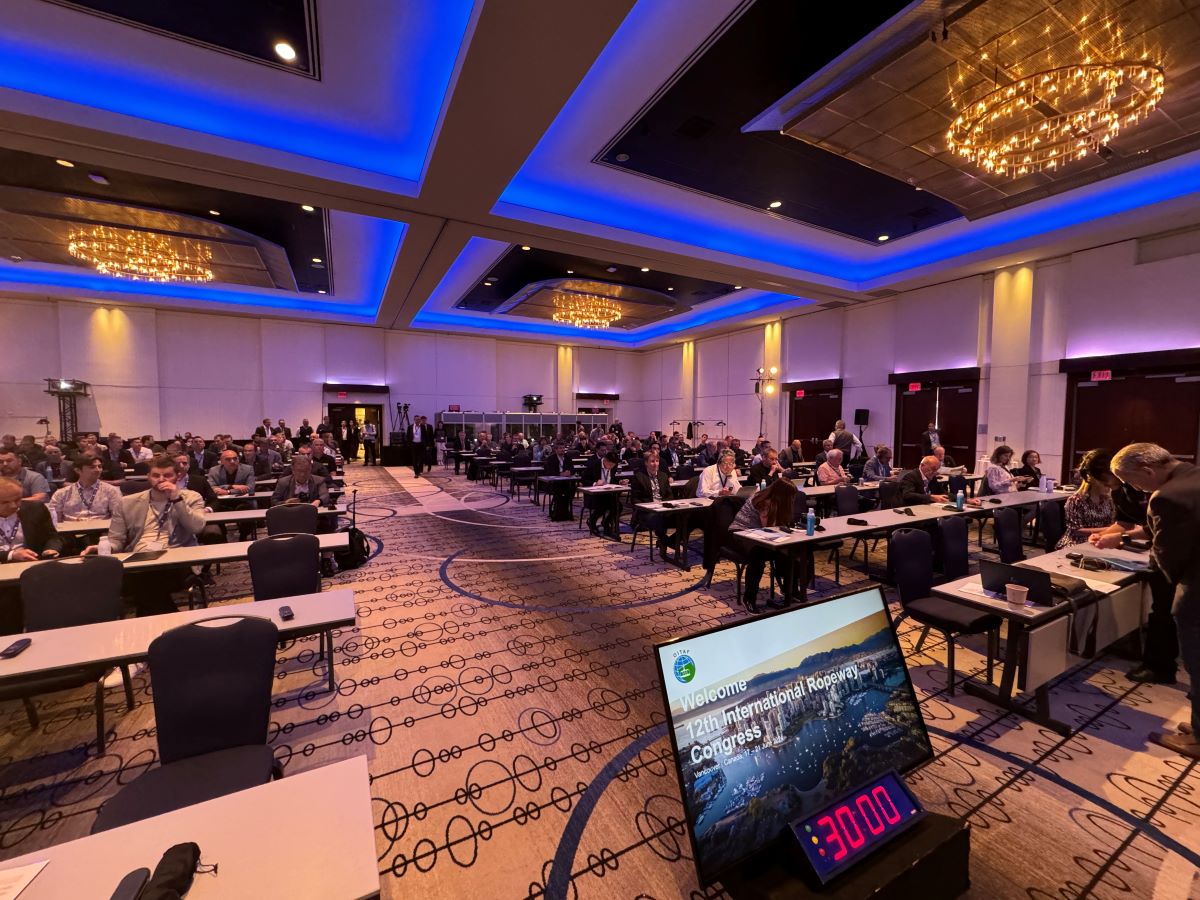
Cableway & Technology, Cities, Management & Tourism, SI-Alpin
OITAF Congress: The Comprehensive Review
“Ropeways – smart transport solutions”: This was the theme of the OITAF World Ropeway Congress 2024, recently held in Vancouver.
For two days, nearly 200 participants met at the Hyatt Regency Vancouver hotel to discuss the development and operation of ropeways in urban and tourist areas, ropeway technology, and dimensions of sustainability.
Additionally, there were two excursions to the year-round destinations of Grouse Mountain and Whistler Mountain/Blackcomb, as well as a leisure program for accompanying persons.
Note:
Details on the presentations will be compiled in separate articles and published in the magazines SI Alpin and SI Urban.
Session 1: How are urban & tourist ropeways developing?
The content of the session began with the outgoing OITAF President Jörg Schröttner (Austria). He spoke about the significance of the International Organization for Transportation by Rope, which is currently celebrating its 65th anniversary. Previously, he discussed his key focus areas in the Cable Car Radio podcast of the trade magazine SI Urban.
What can urban ropeways achieve?
Following Schröttner, Klaus Erharter (Italy), Technical Director of the ropeway manufacturer LEITNER, and Paul Abed (Mexico), Director of the urban ropeway operator Mexitelefericos S.A. de C.V., discussed the transport capacities of ropeways in public transit.
Using the example of the Ecatepec Linea Verde ropeway, the two demonstrated that a ropeway designed for a capacity of 3,000 persons per hour per direction can transport between 36,000 and 40,000 people per day and 12 to 15 million people per year.
The full capacity is only needed during two peak times; otherwise, the speed can be reduced to save emissions. If the system runs at five meters per second instead of six, CO2 emissions can be reduced by 15 to 20 percent!
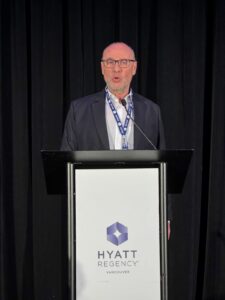
Jörg Schröttner (Austria), President of OITAF
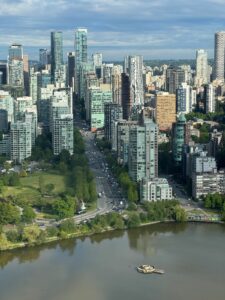
Vancouver, Canada, provided a worthy setting for the 12th OITAF Congress.
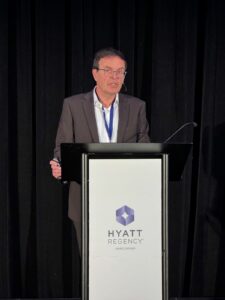
Klaus Erharter (Italy), Technical Director, LEITNER AG
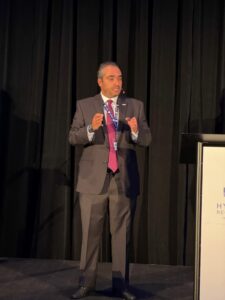
Paul Abed (Mexico), Managing Director of Mexitelefericos S.A. de C.V.
Ropeway for Vancouver
Holly Foxcroft (Canada), Planning Director at TransLink, presented on the planned urban ropeway that will connect the Simon Fraser University campus on Burnaby Mountain with the SkyTrain system in the Greater Vancouver area. The magazine SI Urban had already reported on this in the SI Urban 1/2019 issue and online in 2020.
The plans have now become more concrete: a 3S gondola with a capacity of up to 4,000 people per hour is expected to transport students and commuters between the city and campus in six minutes. Foxcroft particularly highlighted the anticipated benefits of the ropeway, the timeline, considerations for financing and operation, as well as urban planning, environmental, and archaeological challenges.
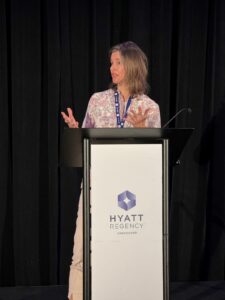
Holly Foxcroft (CAN), Planning Manager, TransLink
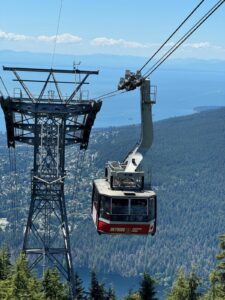
On the excursion day, participants visited the year-round destination of Grouse Mountain.
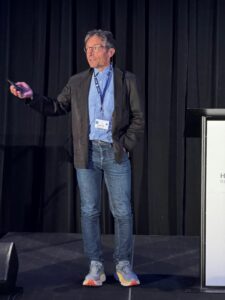
Patrick Vial (F), Project Manager at Teleo, currently overseeing the future third metro line in Toulouse.
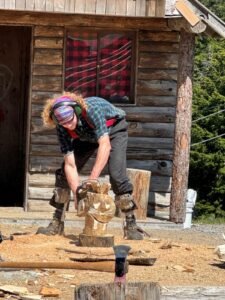
A highlight of the excursion was a lumberjack show.
Example Toulouse
Patrick Vial (F), Project Manager at “Teleo” in Toulouse, focused on established practices two years after the urban cable car’s inauguration. He discussed concerns regarding fires beneath the cable car, successful communication between operators and passengers/residents, and studies on extending the cable car line.
Overall, “Teleo” is highlighted as a project representing a stimulating convergence of mountain cableway and urban transport cultures, marking a progressive evolution from a “crazy” project to a robust pillar of urban mobility.
network dinner
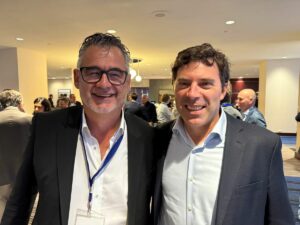
Andreas Dorfmann, CEO of Kronplatz, and Anton Seeber, CEO of Leitner.
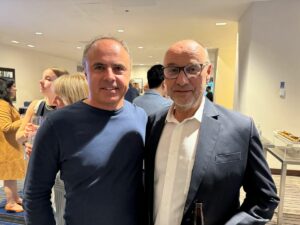
Markus Walser, CEO of Silvrettaseilbahn AG (Ischgl), with OITAF President Jörg Schröttner.

Markus Koller from IKSS with Sven Winter, CEO of ROTEC.
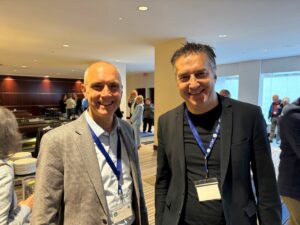
Martin Bechthold, CEO FATZER, with Berno Stoffel, Director Seilbahnen Schweiz
Pioneer in Brest
Victor Antonio (F), Director of Mobility for the city of Brest, spoke about the experiences with France’s first urban cable car. The cable car spans the Penfeld River and connects the historic harbor area, serving 750,000 people annually.
The cable car plays a significant role in revitalizing old factory buildings into a new urban district. The stations are designed to be as small as possible to preserve the historic landmarks. Therefore, the system has only one support pillar, where the two cabins of the shuttle cross over each other.
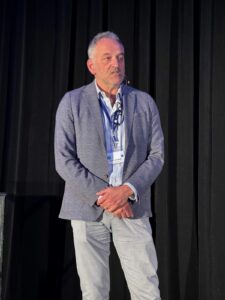
Victor Antonio (France), Director of Mobility in Brest
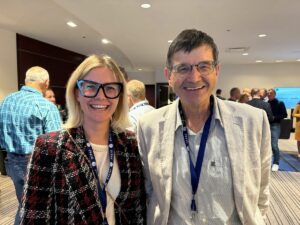
Sophia Oberjakober, Managing Director of the South Tyrol Mobility Consortium, together with Markus Pitscheider, long-time Secretary General of OITAF.
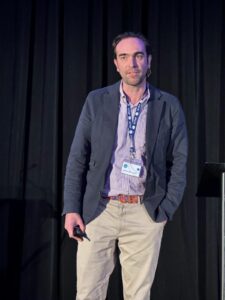
Andrés Lajous (Mexico), Secretary of Mobility, Mexico City
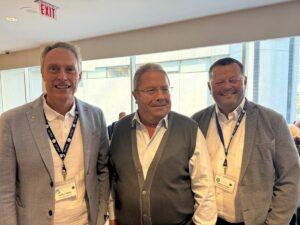
Hannes Mayer from Schmittenhöhe, Franz Hörl (Chairman of Austrian Ropeway Association), and Wolfgang Hettegger from Snow Space Salzburg.
Ropeways as urban improvers
Andrés Lajous-Loaeza (Mexico), Secretary of Mobility for Mexico City, spoke about transportation planning in the context of social inequalities using the example of the ropeway network in Mexico City. He demonstrated how the “Cablebus” systems, which transport 10 million passengers per day, can improve people’s lives.
The three ropeway lines serve neighborhoods with dense and large populations that were previously marginalized by the public transport network. Ropeways have enabled people to save time, reach their workplaces faster, and do so more safely.
Furthermore, the construction and operation of ropeways have sparked economic activity (2,675 new businesses), provided employment for locals, and improved overall safety with enhanced lighting, cameras, and sidewalks.
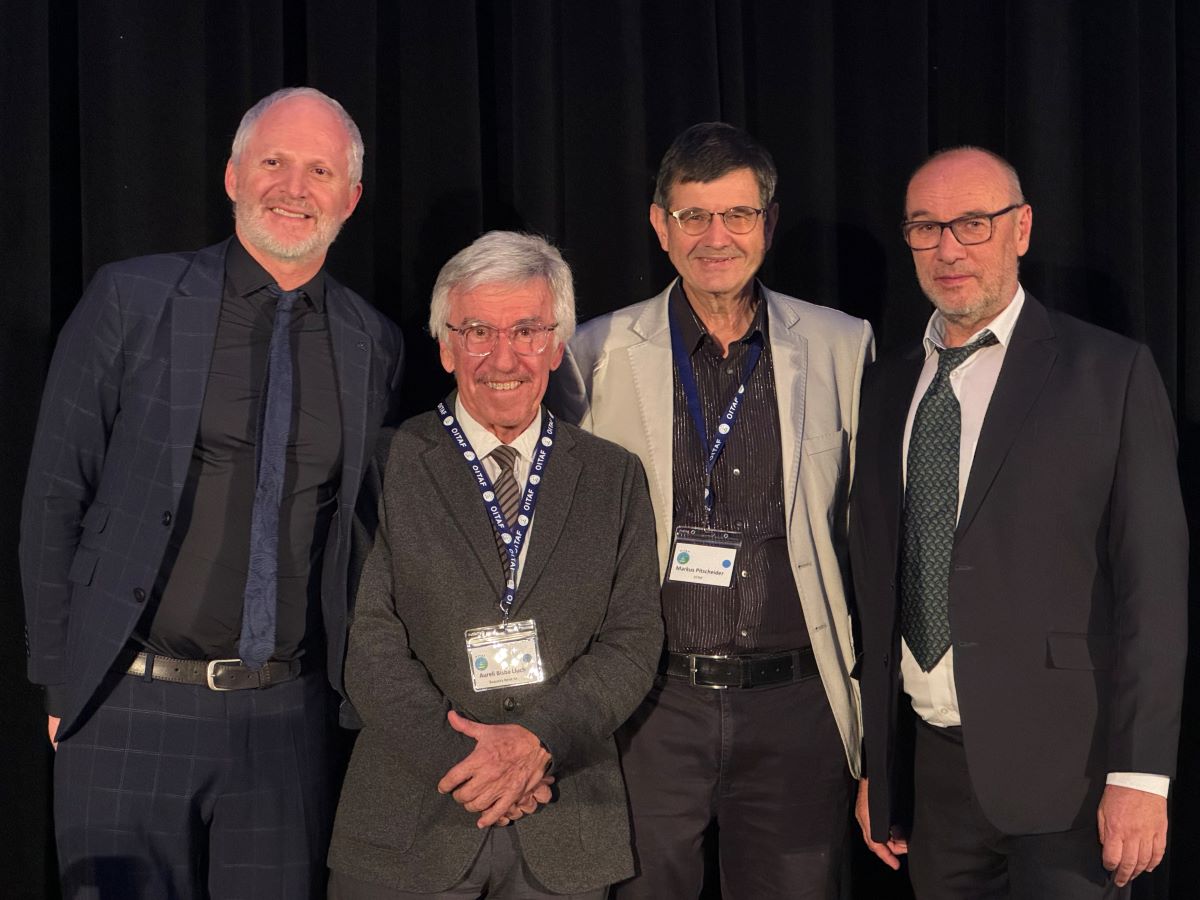
Leadership Change (from left to right): Nicola Barbolini from the Provincial Office for Ropeways of the Autonomous Province of Bozen as the new OITAF Secretary General, and Aureli Bisbe Lluch, the new OITAF President, alongside Markus Pitscheider, long-time Secretary General of OITAF, and Jörg Schröttner, outgoing President of OITAF.
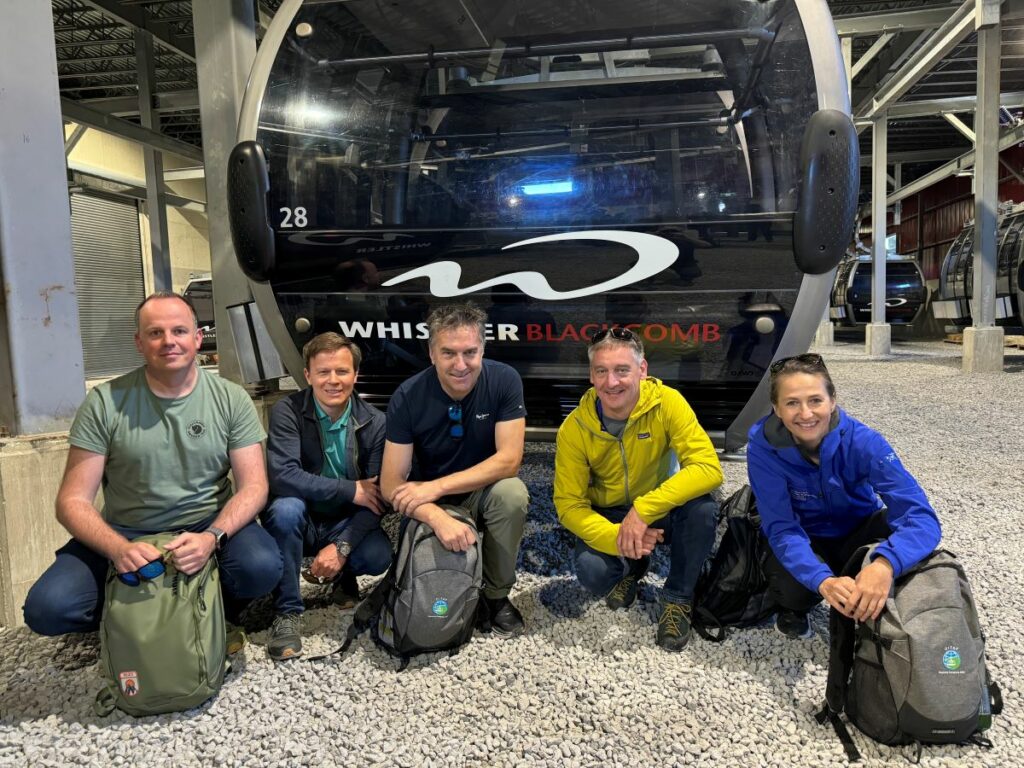
Together on Excursion (from left): Henrik Volpert (CEO & Board Member of Oberstdorf-Kleinwalsertal Bergbahnen), Oliver Reinelt (FATZER), Berno Stoffel (Director of SBS), Sven Winter (Managing Director of Rotec), and Benedicta Aregger (Vice Director of SBS) during the visit to Whistler-Blackcomb.
Session 2: Operation of ropeways
The second block of the congress was dedicated to the supplier industry. Sven Winter (Germany) from the ropeway inspection company ROTEC explained how operators can maximize the performance of their ropes. He particularly focused on the lifespan of alpine and urban ropeway ropes and how to calculate these.
Philip Oberdorfer (Austria) from the ropeway manufacturer DOPPELMAYR advocated for digital employee training. According to him, the safe operation of ropeways often faces significant challenges due to frequent personnel turnover and the need for ongoing skill enhancement. Digital employee training can address these issues, positively impacting time, costs, and team effectiveness.
Following this, Oberdorfer’s colleague Franziska Junginger (Austria) outlined a long-term successful strategy for managing customer assets related to the operation and maintenance of a ropeway.
Marco Zgraggen (Switzerland) from SISAG AG then discussed the digitization of ropeways, Industry 4.0, and the Internet of Things (IoT). He explored the benefits of IoT, such as better decision-making, increased availability, and knowledge retention, while also highlighting risks such as cybercrime, data breaches, data transparency to third parties, and system dependencies.
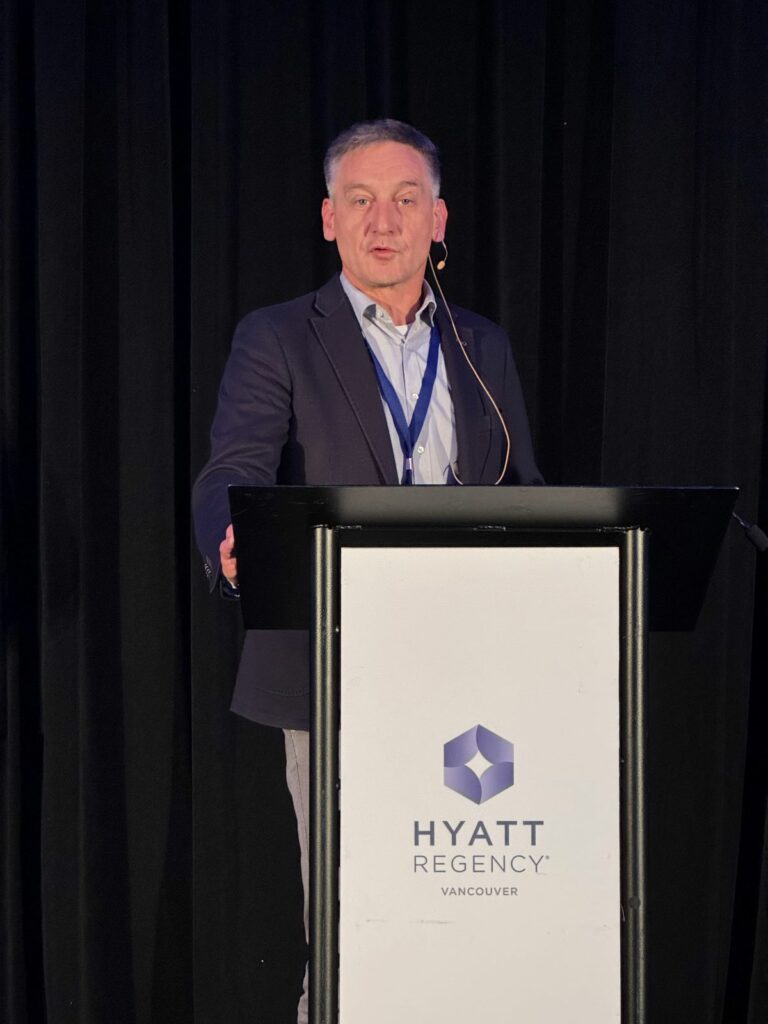
Sven Winter (Germany) from the ropeway inspection company ROTEC explained how operators can get the most out of their ropes.
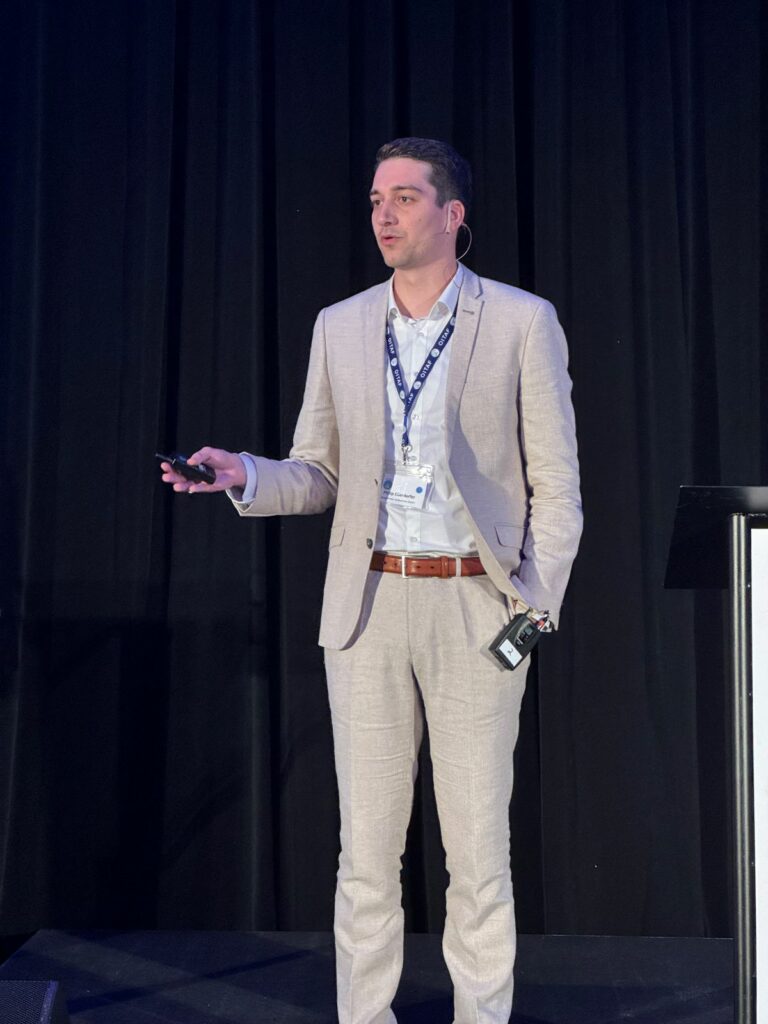
Philip Oberdorfer (Austria) from the ropeway manufacturer DOPPELMAYR advocated once again for digital employee training.
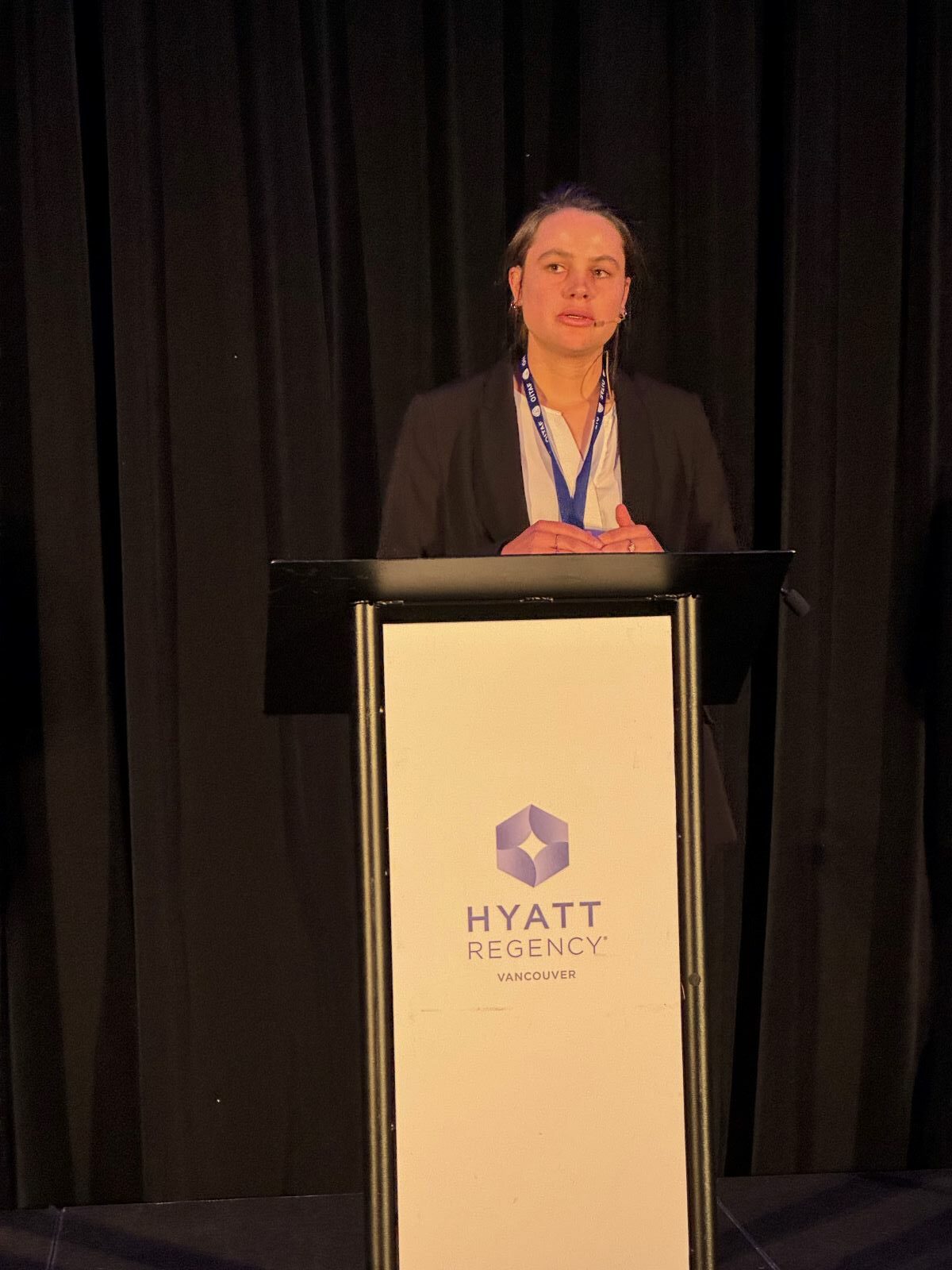
Franziska Junginger from DOPPELMAYR developed a concept for managing customer assets related to the operation and maintenance of ropeways.
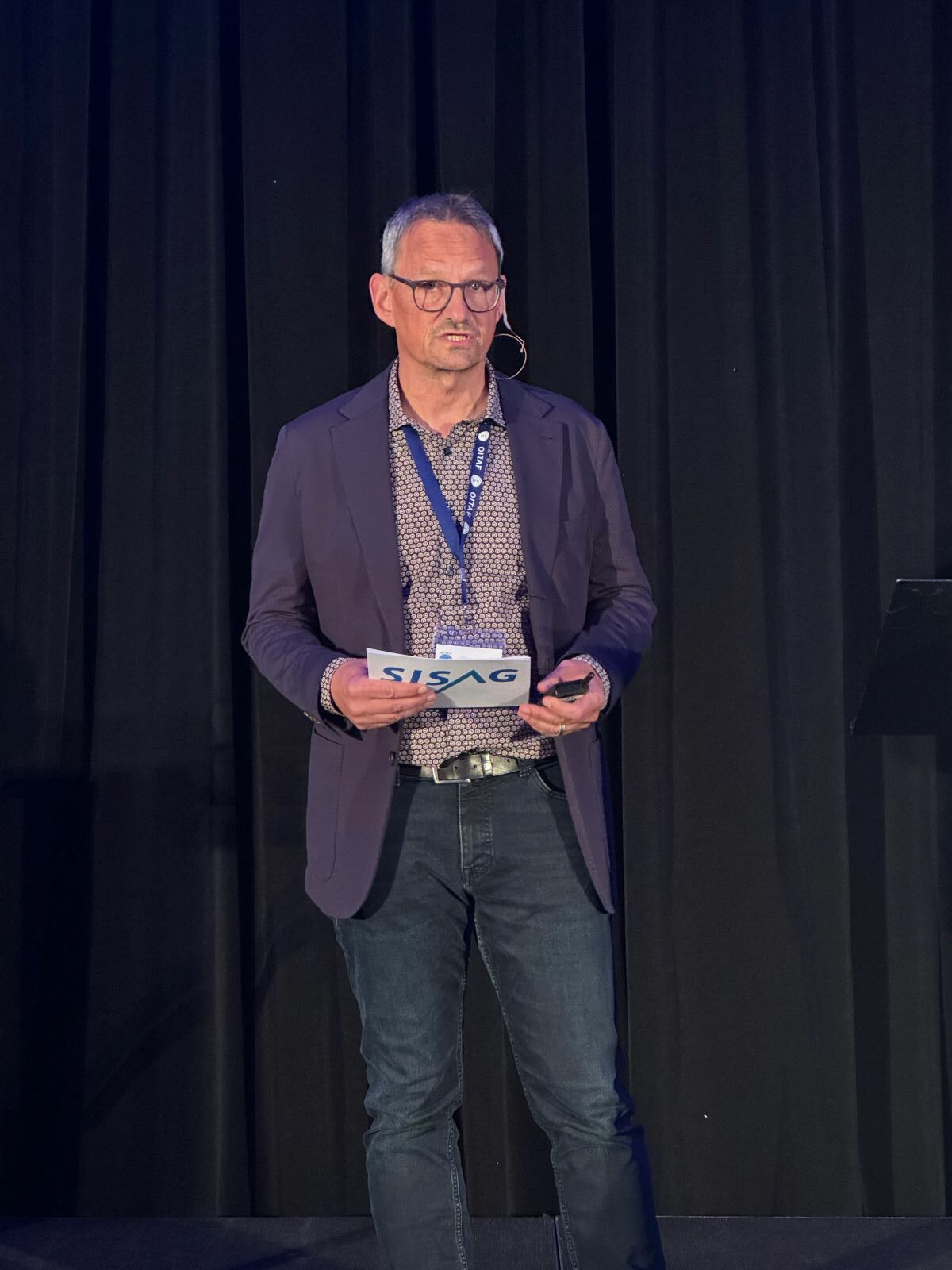
Marco Zgraggen from SISAG informed about the opportunities and risks of the Internet of Things (IoT) in the ropeway industry.
Inputs from around the world
“The Operation and Maintenance of a Multi-brand Ropeway” was the title of the presentation by Diego Scofano (Brazil), Technical Director of Grupo Iter from Rio de Janeiro (Brazil). He focused particularly on the Sugar Loaf Cable Car, the famous ropeway to the Sugarloaf Mountain.
On the other hand, Michael Fauche (France), Director for New Markets & Strategy at the French ropeway manufacturer POMA, presented “Life R’way,” an innovative approach to enhancing the sustainability of ropeways and their operations throughout their lifecycle. You can read more about this in the SI Urban interview.
In a less technical but equally human-centered approach, Benny Pregenzer (Austria) discussed how ropeway companies can become good employers that attract talented individuals. Benny is the longtime CEO of Fisser Bergbahnen.
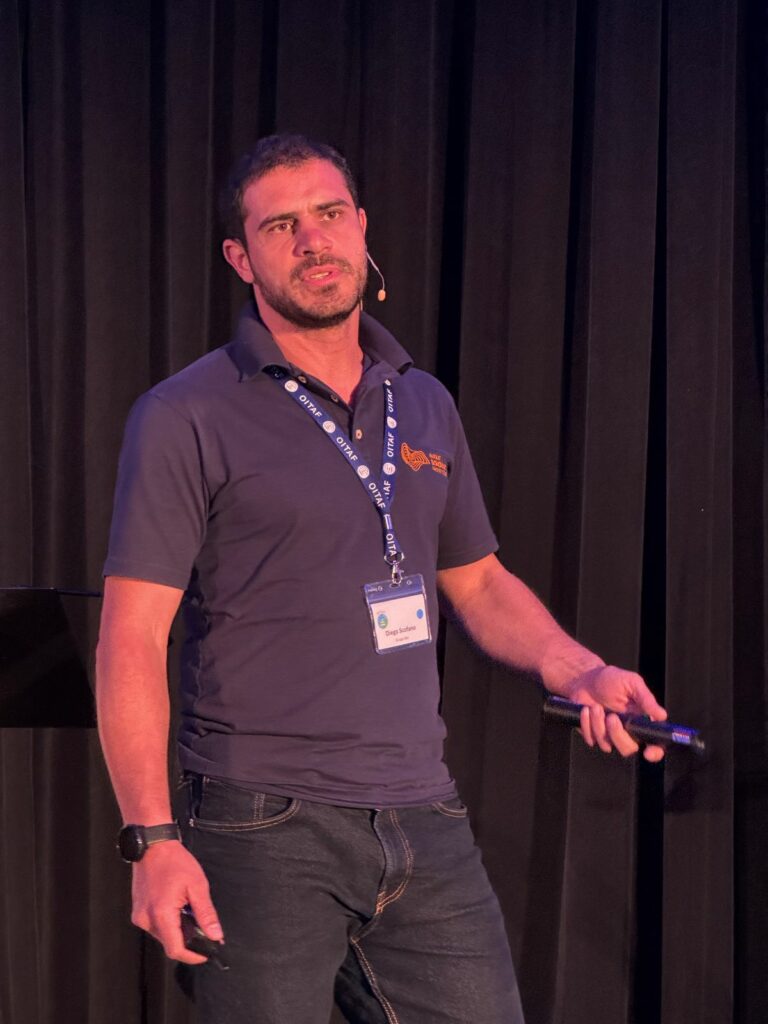
“The Operation and Maintenance of a Multi-brand Ropeway” – that was the title of the presentation by Diego Scofano (Brazil), Technical Director of Grupo Iter from Rio de Janeiro (Brazil).
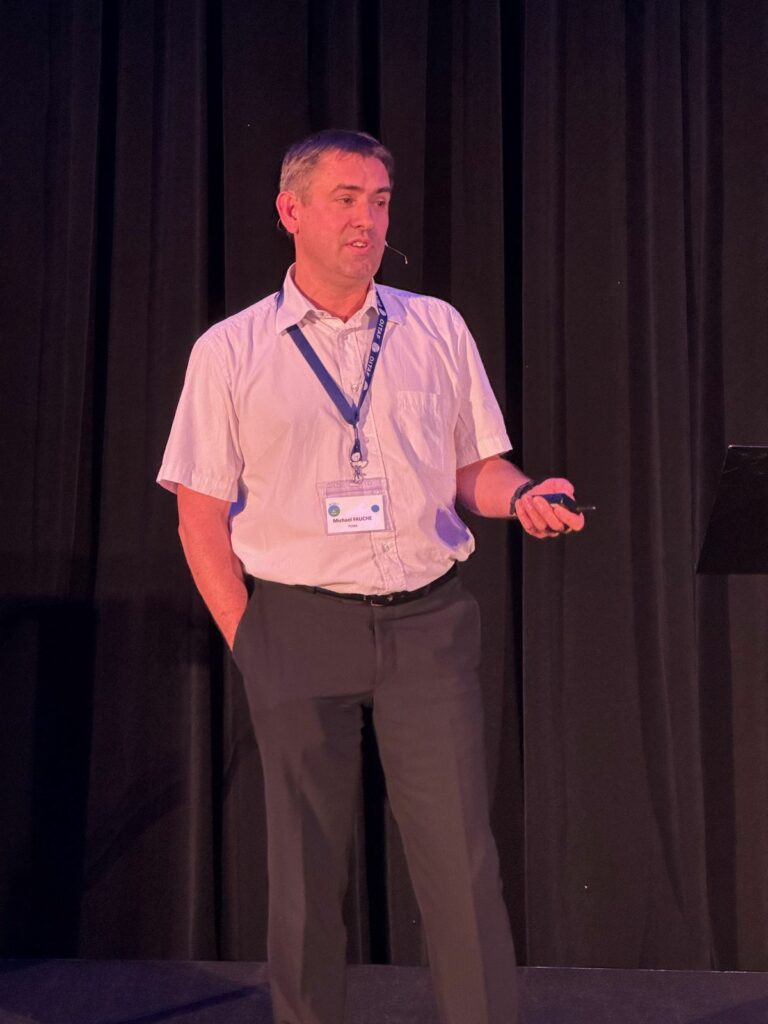
Michael Fauche (France), Director for New Markets & Strategy at the French ropeway manufacturer POMA, presented “Life R’way”.
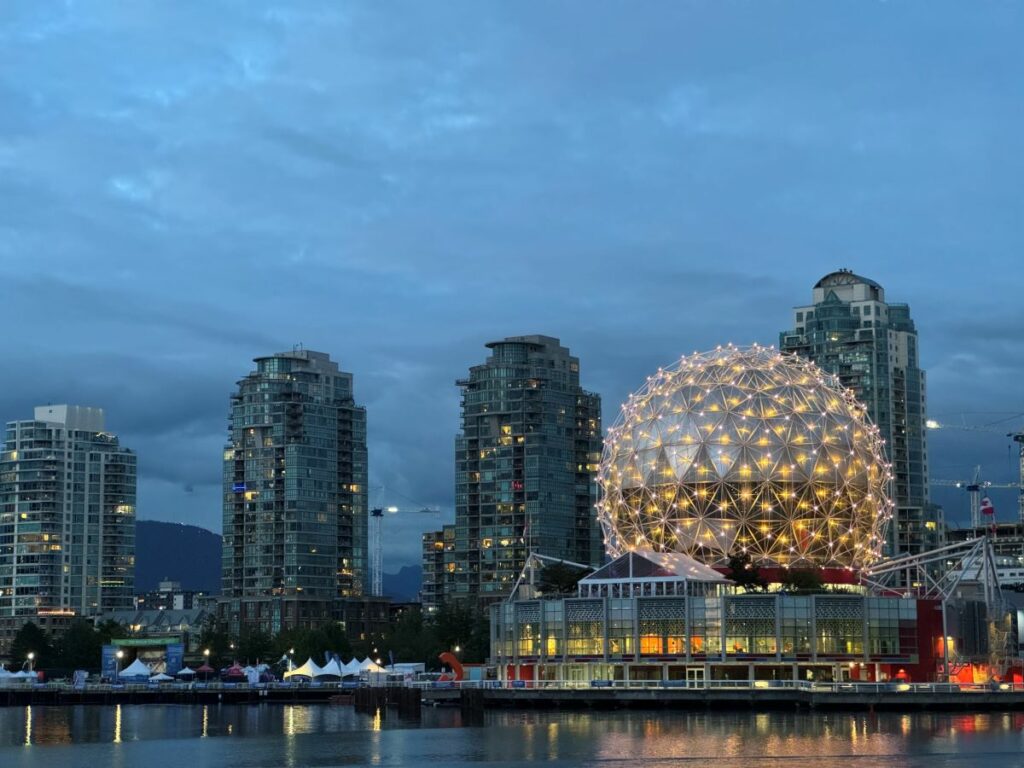
In addition to the conference, there was also time for visits such as the Science World in Vancouver.
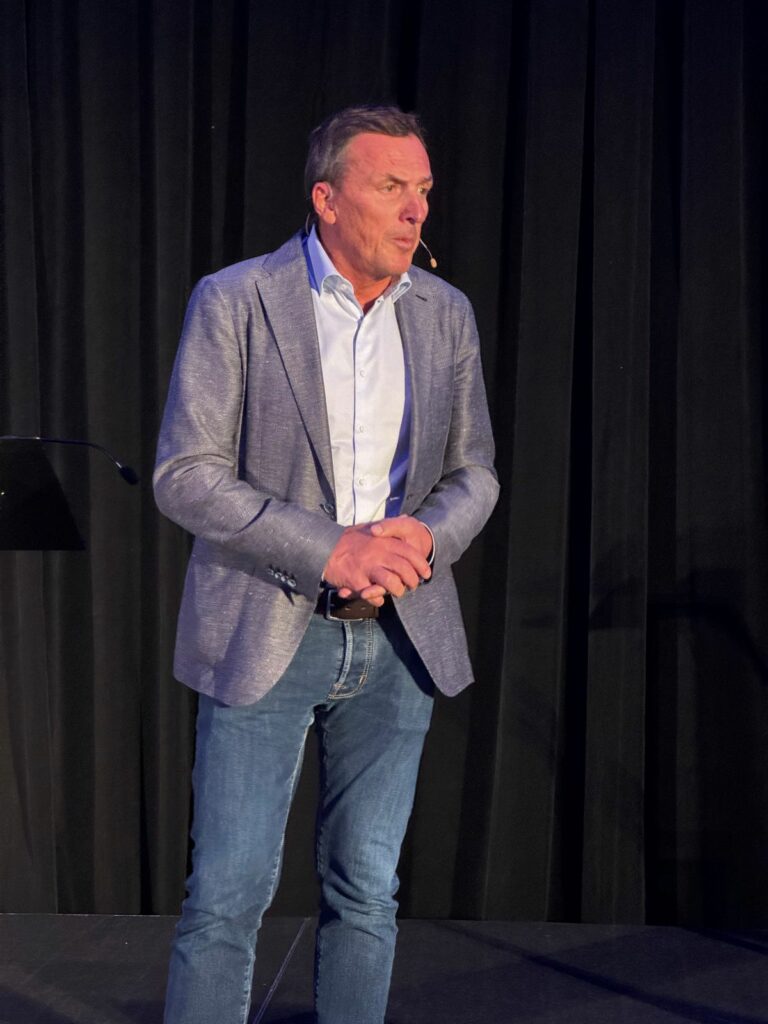
Less technical but more human-focused was Benny Pregenzer’s (Austria) presentation. The longtime CEO of Fisser Bergbahnen spoke about how ropeway companies can become great employers that attract talent.
Insights from USA, Colombia and Germany
John Kamb (USA), ropeway engineer from the US Forest Service, explained why ropeways are leading in safe and barrier-free passenger transportation. He specifically addressed the transportation of physically impaired individuals, a demographic that is increasing. Technology, standards, and operations of ropeways must keep pace with this development.
With 20 years, 135,000 hours, and 260 million transported passengers, the Metrocable Line K in Medellín (Colombia) has seen significant operation. Ropeway manager Jorge Ramos (Colombia) detailed how maintenance of such a system remains sustainable over the years, emphasizing the role of ongoing staff education (training, laboratories, support). He also discussed the maintenance requirements for cabins.
Closing the first day of the congress was Dominik Berndt (Germany), Managing Director and initiator of the Cable Car World congress fair for urban ropeways. He spoke about electric mobility in the +1 level of public transportation.
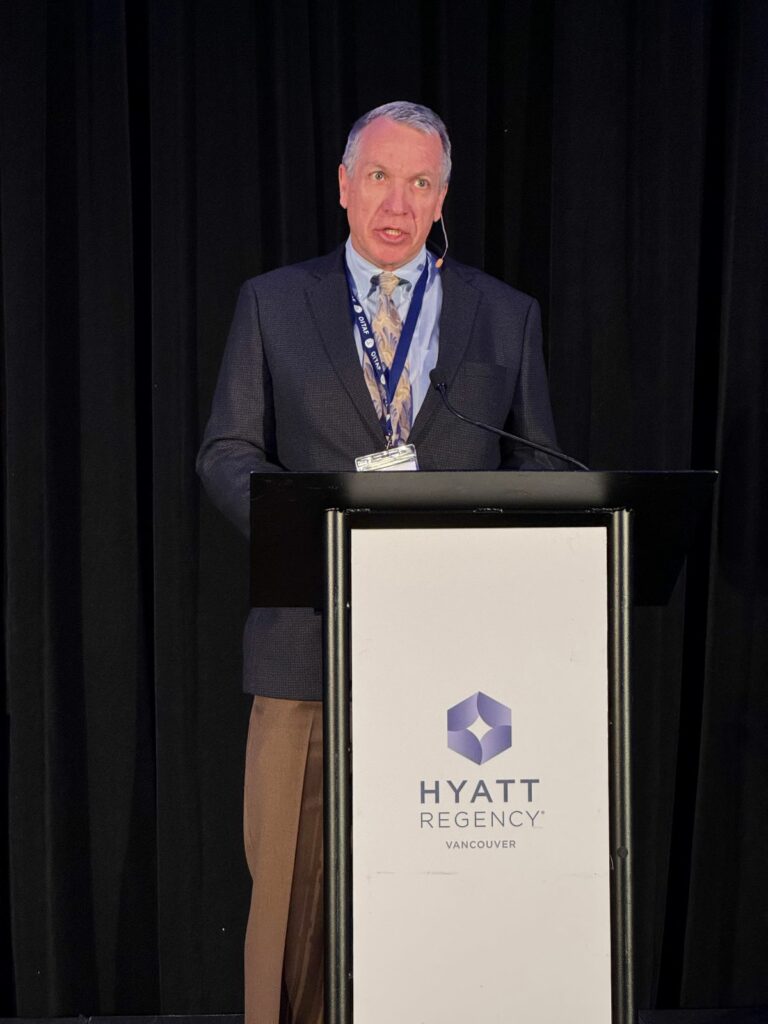
Tom Scully from the US forest service addressed weather-related challenges in the operation and maintenance of ropeways during his presentation.
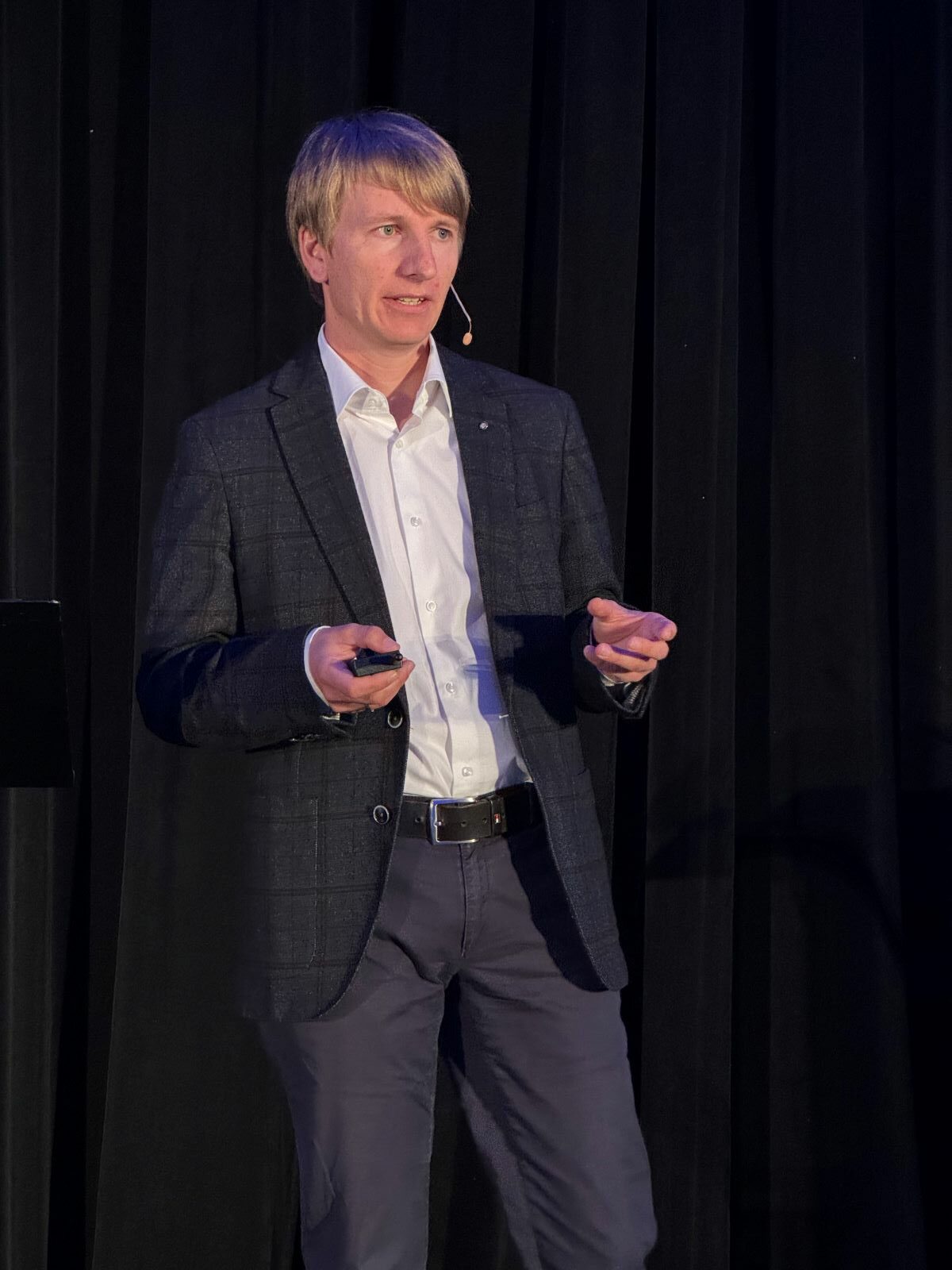
Seilbahn Safety: Georg Schober from TÜV Süd is in his element.
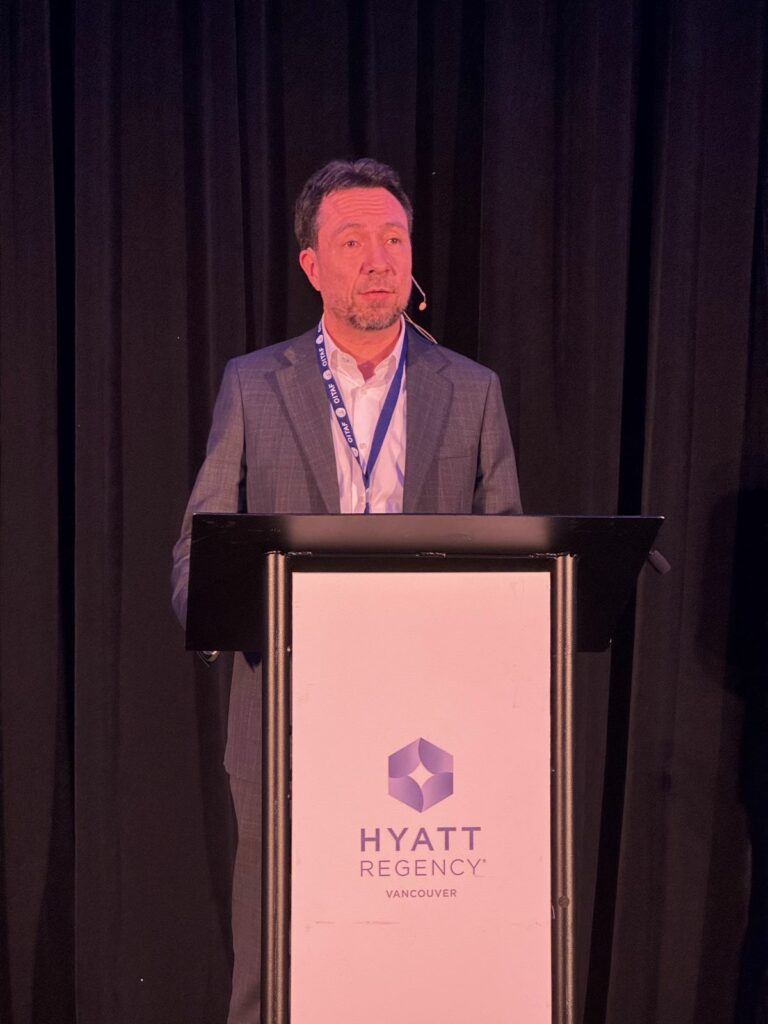
Ropeway manager Jorge Ramos (COL) explained how to maintain operations at a facility like the Metrocable Line K in Medellín (Colombia).
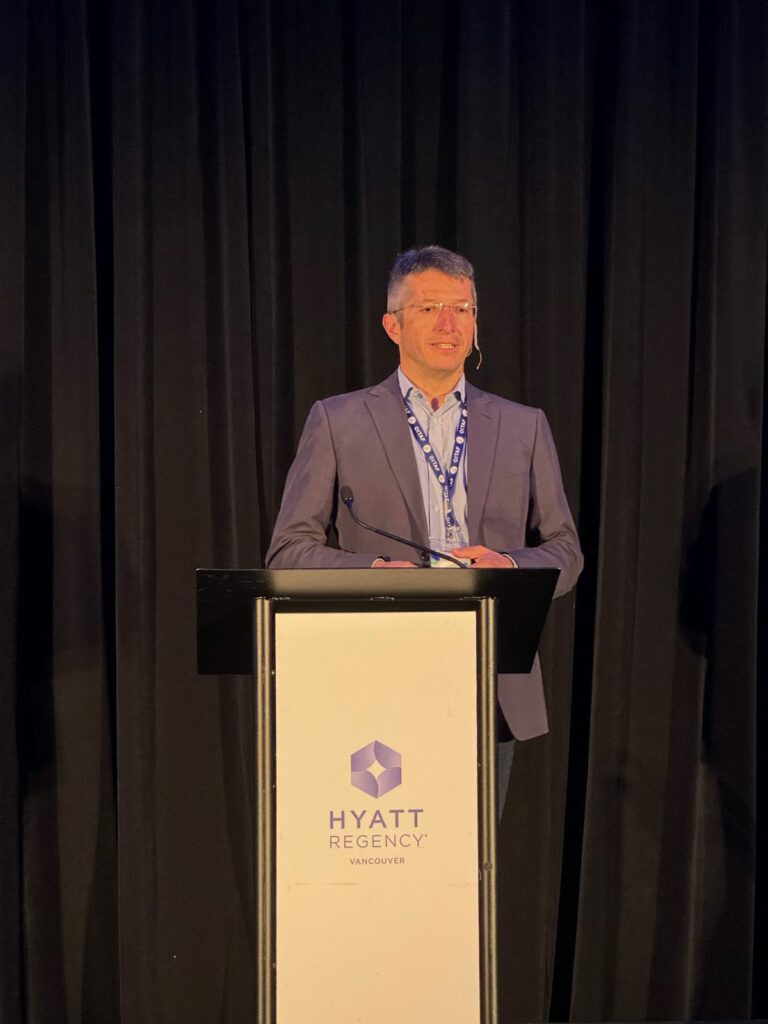
At the World Ropeway Congress, Günther Tschinkel from ropeway manufacturer LEITNER announced the market readiness of ConnX.
New developments in ropeway technology
Safe, autonomous, and risk-free travel
The second day of the OITAF Congress was primarily focused on technological advancements.
Gaetan Rioult (France), Head of the Ropeway Systems Department at STRMTG France and President of OITAF’s Study Committee I, proposed a method for assessing the minimum safety level of monocable ropeways.
Michael Mathis (Austria), Technical Director at DOPPELMAYR, and Martin Oberhammer (Austria), CEO of Silvretta Montafon Holding GmbH, discussed Autonomous Mobility with Ropeways. They view the “AURO System” – operating ropeways without onboard staff – as the next generation of modern transportation.
Tom Scully (USA), a risk control consultant and President of OITAF-NACS, addressed weather-related challenges in the operation and maintenance of ropeways.
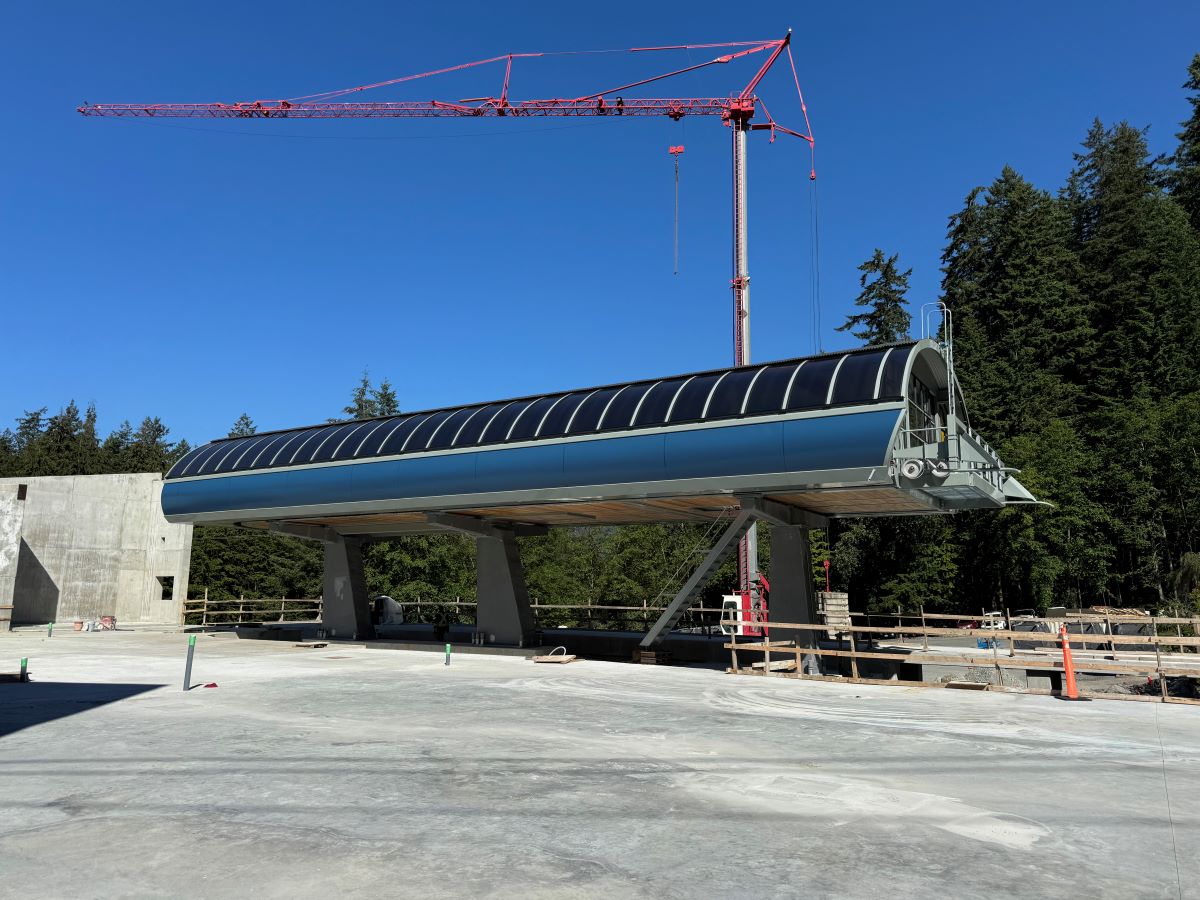
A circulating ropeway under construction on Grouse Mountain.
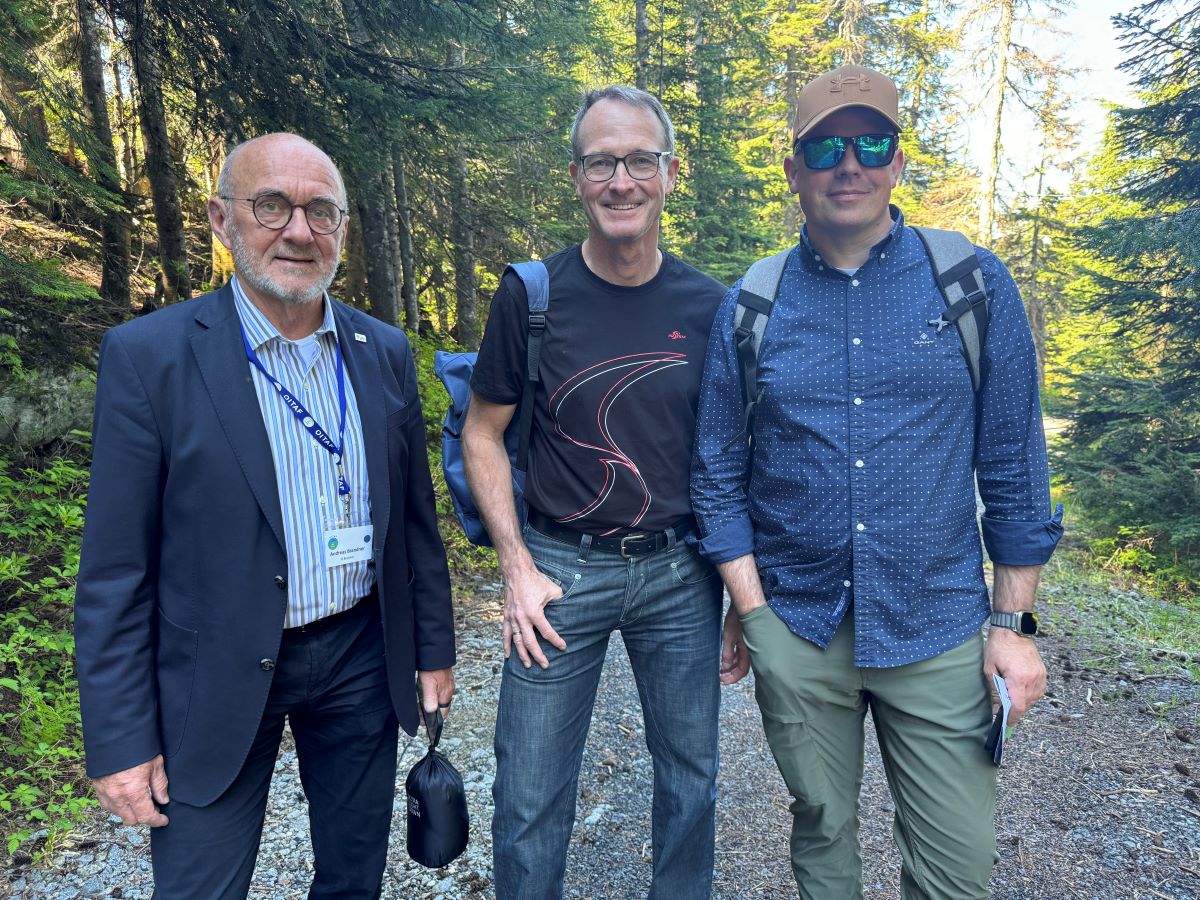
The industry players come together: ropeway planner Andreas Brandner, ropeway lawyer Christoph Haidlen, and ropeway operator Henrik Volpert.
On fires, market readiness and urban safety
Following, Thibault Chatelus (France), a ropeway engineer at the French regulatory authority STRMTG, proposed a new approach for traversing critical areas, focusing particularly on fire risks beneath ropeways.
At the World Ropeway Congress, Günther Tschinkel from LEITNER, the ropeway manufacturer, announced the market readiness of ConnX. The core of this innovative solution involves cabins transferring to an autonomous electric vehicle upon entering the station, which then continues its journey at ground level.
Georg Schober (Germany), Head of the Transportation and Ropeway Department at TÜV Süd, then presented on the safe planning, assembly, and operation of ropeways—covering ropeway safety comprehensively.
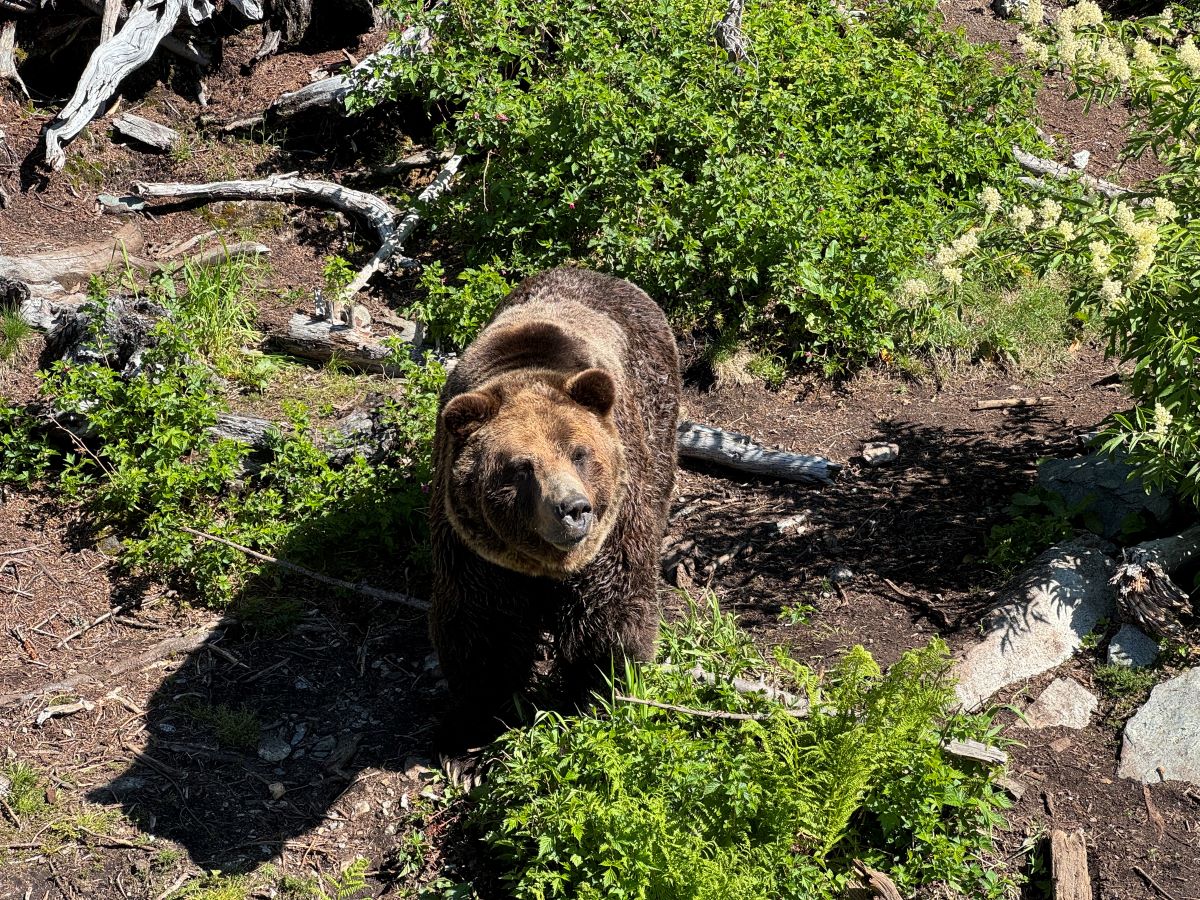
In Canada, bears apparently count among the attractions on the mountain.
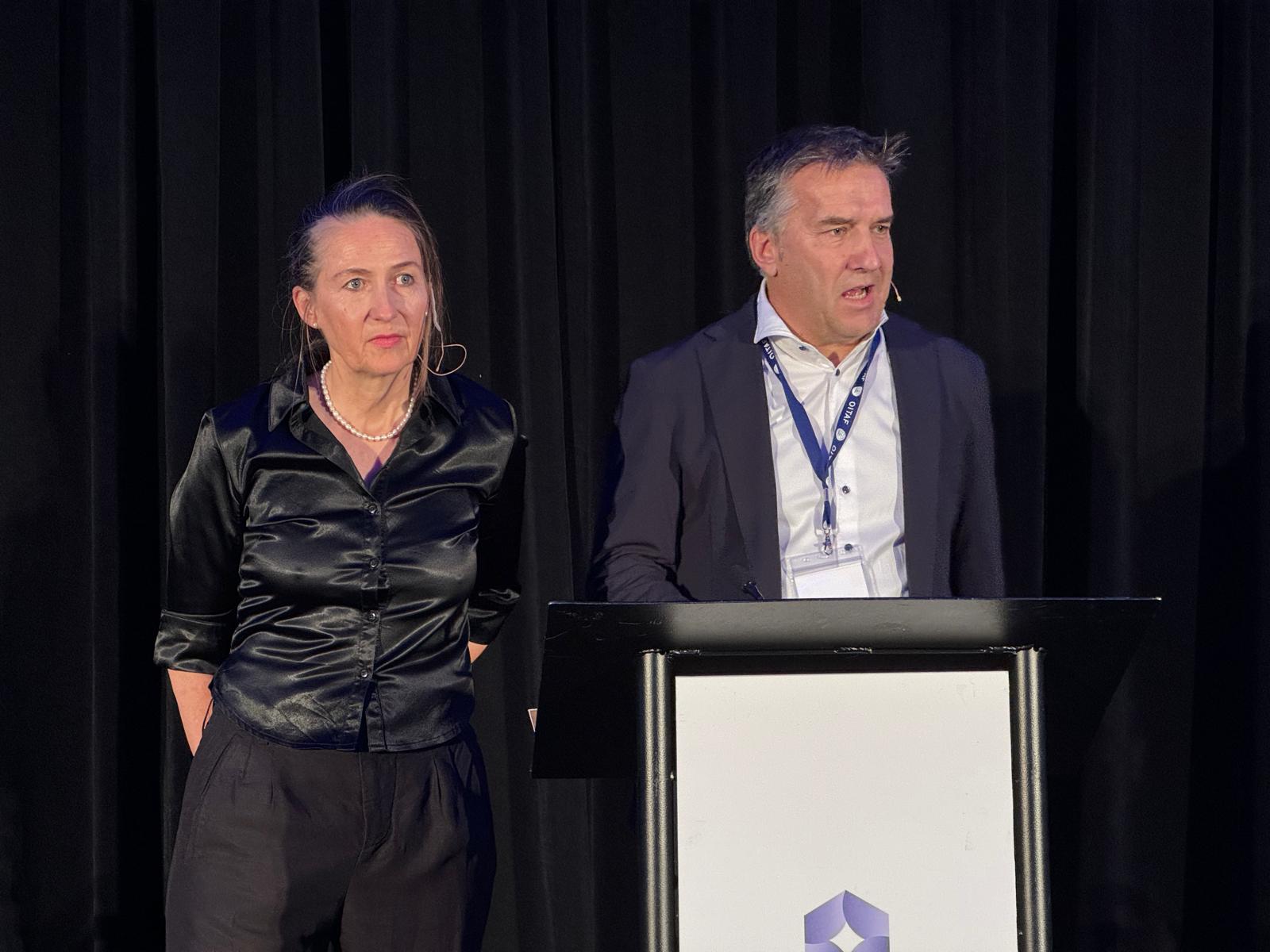
Vice Director Benedicta Aregger and Director Berno Stoffel of the Swiss Cableways Association presented adaptation strategies in times of climate change.
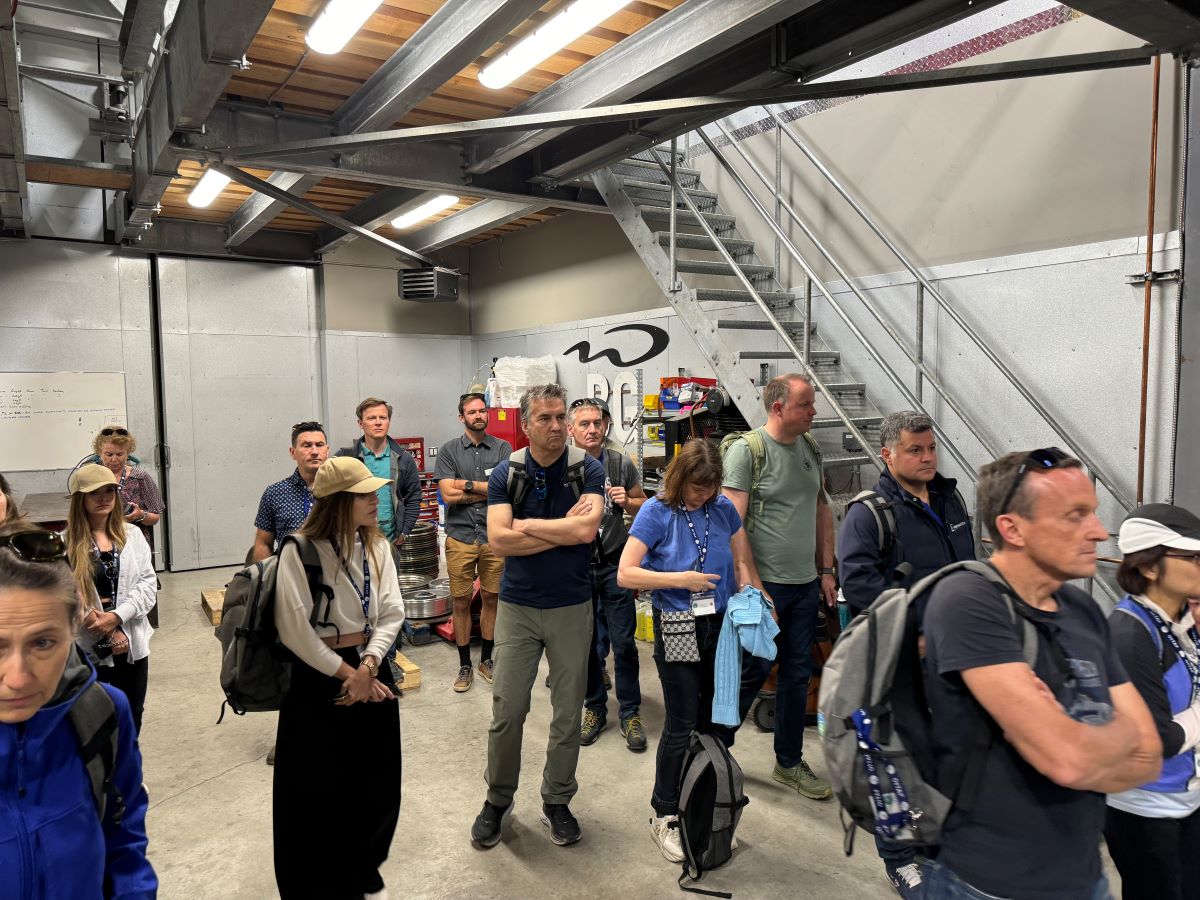
During the excursions, participants were given behind-the-scenes glimpses.
Session 4: Dimensions of sustainability
Old tram and new snowmaking
The final thematic block was opened by Samuel Lee (Hong Kong), Technical Director of Peak Tramways Company Limited, Hong Kong. He explained how modern technologies and strategic upgrades have contributed to making operations more efficient and safer while preserving the historic charm from 1888.
Climate change poses a significant challenge to Swiss mountain railways. Berno Stoffel (Switzerland), Director of the Swiss Cableways Association, and Vice director Benedicta Aregger presented various adaptation strategies aimed at maintaining operations under changing climatic conditions.
Franco Torretta (Italy), Technical Director of the Monterosa ski area, Italy, and President of the National Association of Italian Ropeway Technicians (A.N.I.T.I.F.), discussed the development and optimization of snowmaking systems for better resource management.
Ski tourism researcher Günther Aigner (Austria) presented empirical data on technical snowmaking, demonstrating that it can be more environmentally friendly and sustainable than commonly assumed.
Stefan Gassmann (Switzerland), Sales Manager at FREY AG, spoke about an energy storage system for funicular and cable cars. This system aims to increase energy efficiency and reduce operating costs.
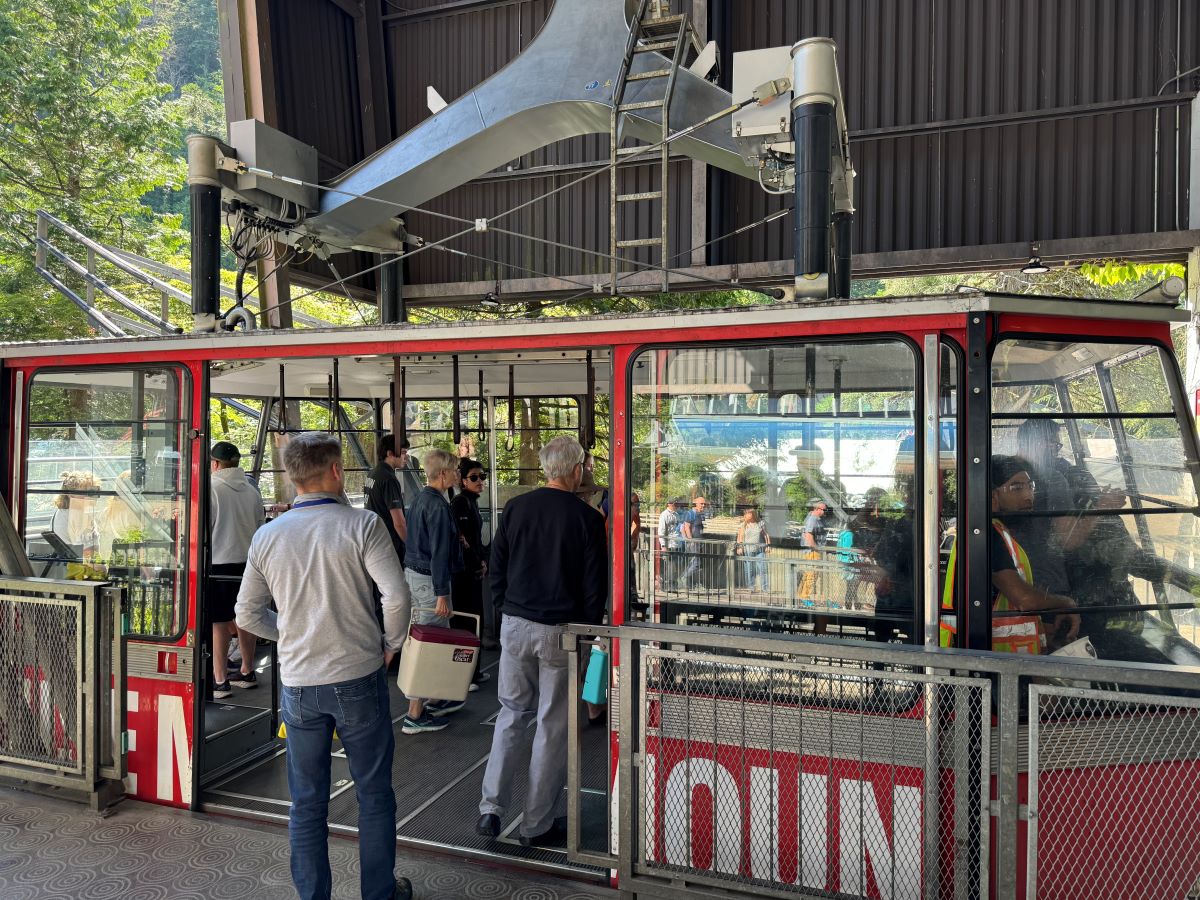
The aerial tramway of Grouse Mountain.
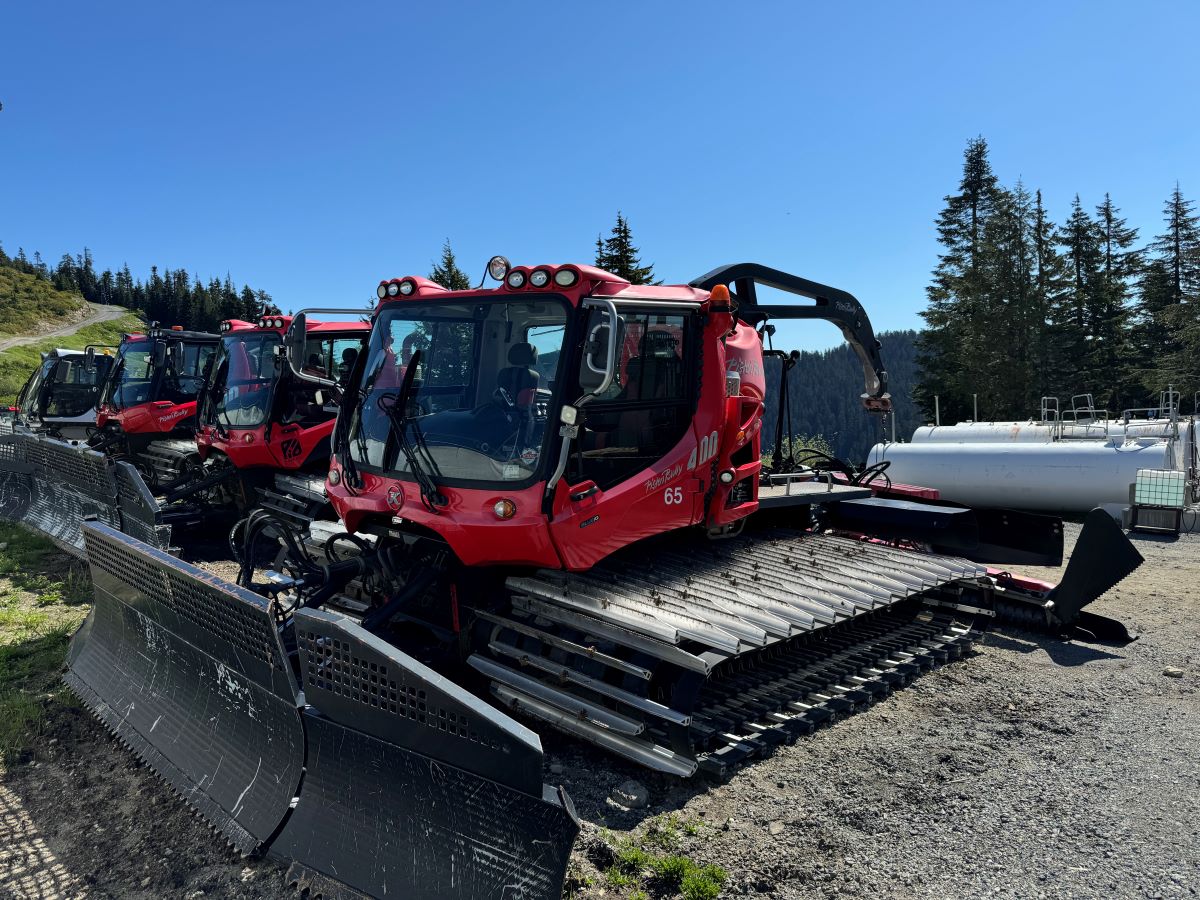
The fleet of vehicles at Grouse Mountain.
Environmental, mobility and the bicable system
Gunther Suette (Austria), President of OITAF’s Study Committee VII, presented his findings on the interactions between tourist areas and the environment. He emphasized the importance of integrating sustainable practices into tourism to protect natural resources while preserving the attractiveness of destinations.
Sophia Oberjakober (Italy), CEO of Mobility Consortium, and Andreas Dorfmann (Italy), President of Mobility Consortium and CEO of Kronplatz Group, introduced an innovative strategy for ski resorts that positions public transportation as an essential service for the future.
Dominic Bosio (France) from ropeway manufacturer LEITNER presented the new generation of bicable gondola lifts as an economical link between monocable circulating ropeways (MC) and 3S ropeways. He explained the technical and economic advantages of this new technology.
Lastly, Michael Cameron (Canada), President of Grouse Mountain Resort, showcased his ski resort. He provided an overview of the unique offerings and sustainable initiatives of the resort aimed at creating an environmentally friendly and attractive vacation destination.


